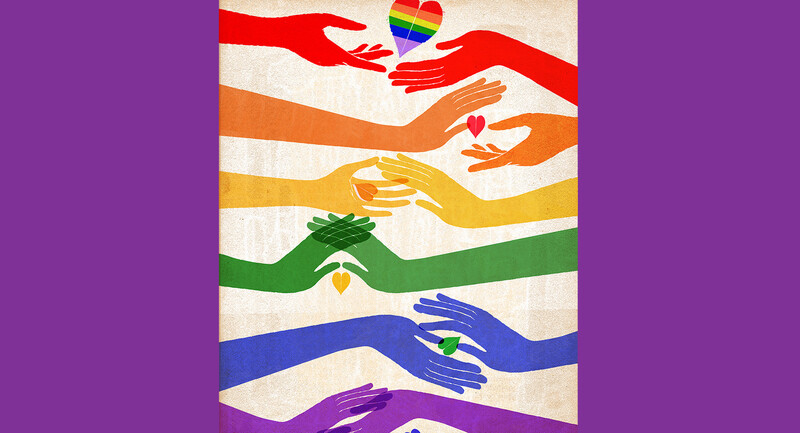Throughout my career in education, I have actively worked to dismantle inequitable systems so that all young people can have positive outcomes from their school experiences. As a BIPOC educator working within an education system fundamentally designed to exclude me and students who look and sound like me, there has been no shortage of emotions surfaced along my professional journey. In the countless hours I have spent teaching, observing classroom instruction, and speaking with educators and students, I have often witnessed, and personally experienced, bouts of frustration, grief, and anger—but also excitement, optimism, and joy.
Joy is a powerful and profound emotion. Leveraging joy in the face of adversity, hardship, or oppressive circumstances is a way to express our emotional resilience. As emotionally intelligent educators, we must take a non-binary approach to how we think about joy and sadness. Essentially, we can approach joy as “a state of mind that can be found even in times of grief or uncertainty” (Collier, 2022). The emotions of joy and sadness can coexist within many circumstances. It’s up to us to pursue joy as an act of resilience and as a way to model emotional intelligence for our students.
I believe that when educators engage in a deliberate practice of joy for themselves, and intentionally bring joy into the classroom community, they help create conditions for student well-being, belonging, and engagement in learning.
Joy as a Practice of Resilience
Joy has the power to help us transcend difficult circumstances—even the difficulties of our polarizing current political climate and its impact on the education system. Maintaining our emotional well-being and sense of joy can be a form of resistance, an exercise in agency, and a source of strength. The education system at large was not founded to support the emotional, physical, cultural, spiritual, and intellectual safety of people of color. Leveraging joy as a form of emotional resilience is a foundation for how educators, especially educators of color who have endured and continue to endure emotional harm, can withstand triggers and a sense of overwhelm from societal messages and interpersonal interactions. Though this work is deeply imperative for racialized and politicized identities, it is important to acknowledge that the extra labor for people of color to feel emotional safety is unfair and, oftentimes, unsustainable.
When educators embrace joy, they are better able to maintain their mental and emotional strength even in the face of societal strife that is outside their sphere of control—and they can model emotional resilience and hope for the students they serve. Psychotherapist Deb Dana coined the term “glimmer” (Dana, 2018) for this practice of noticing “the moments of positivity we experience that can combat difficult situations or negative emotions” (Marter, 2023). Seeking out moments of joy impacts our body’s nervous system and ability to regulate our mental state. When educators engage in this deliberate practice, they can protect themselves from forces that activate the fight-or-flight response, regulate their emotions, and focus on the collective goal of creating positive learning outcomes for students.
'Glimmer' is the practice of noticing 'the moments of positivity we experience that can combat difficult situations or negative emotions.'
In my opinion, leveraging joy as an essential part of emotional resilience can be particularly relevant in contexts where individuals or groups have been historically marginalized or discriminated against. As a person who identifies as first-generation Taiwanese American, and who has experienced K–12 teaching and learning as part of an underrepresented group, I have felt firsthand the emotional labor and pain from being othered and unseen based on my identities. In these situations, I have found it helpful to celebrate and share unique stories of joy from historically underserved communities, even during times of despair and systemic adversity. Educators of all backgrounds and identities can model and lift up these unique stories by inviting in guest speakers, reading books that center BIPOC joy, or sharing their own personal stories of navigating sorrow through the practice of joy.
In my current role as Director of Programs at Challenge Success, a nonprofit school reform organization affiliated with Stanford University’s Graduate School of Education, I have seen the need for the practice of joy to support emotional resilience and well-being, especially given the current realities of our education system. One way we approach this is by leveraging our comprehensive IRB-approved survey to understand the school experience in relation to student and educator well-being, belonging, and engagement. From the responses of more than 5,000 educators to our 2020–2023 survey, we found the top two reported major sources of stress are overall workload and a lack of time to relax or be with friends and family (see fig. 1).
With the overload of work responsibilities and lack of opportunities for rest, educators may experience increased stress, which can impede their ability to practice emotional intelligence, such as regulating their emotions and responding empathetically to the needs of students and colleagues. With reduced capacity for self-regulation and empathy, educators may find it difficult to manage feelings of despair, navigate interpersonal conflicts, and foster inclusive and culturally responsive learning environments that support diverse student needs.
Given the pressures educators experience in schools today, how can educators practice joy and attend to their own emotional well-being while also cultivating inclusive and engaging learning spaces? I believe the following strategies that have helped me over the years can support fellow educators in their joy-cultivating journeys.
Maintaining our emotional well-being can be a form of resistance, an exercise in agency, and a source of strength.
Three Ways to Cultivate Individual Joy
1. Start with ongoing identity-conscious learning.
Engaging in ongoing self-reflection to build awareness of your own unique identities and lived experiences is a key part of identity-conscious learning (Talusan, 2022). In your experiences as an educator, when did you feel joy or happiness? When did you feel sadness or anger?
Recognize and understand your own emotions, including causes and effects of your thoughts and behaviors. Learn about those root causes. For example, if you find yourself feeling frustration in an interaction with a student or colleague, notice and name that emotion, and then take a moment to step back and reflect on what is causing that frustration. What about your own identity or prior experiences is leading you to have that emotion? Questions you might ask yourself are: What activated my joy? What activated my sadness? How does that impact the way I engage with students? Or the way I design learning?
Recognize that your experiences are unique and may require different approaches from what helps others. Seek to understand what type of support and resources you need to center your whole self. For example, I actively read and connect with authors and colleagues who represent identities that will speak to and value my intersectional identities. Often, what is in the dominant media or culture doesn’t reflect what BIPOC educators need, so it is important to intentionally seek perspectives or practices from those who can empathize with your identities, affirm your emotions, and provide the healing and resilience you need.
2. Engage in regular self-care and self-regulation practices.
Understand what brings you joy that is healing and constructive. Build in those moments of joy on a regular basis. This includes building in routines that intentionally center joyful moments, paying attention to small moments of joy in the day, and reflecting on the healing and constructive nature of those moments. For example, on my daily commute to work or when dropping children off at school, I try to notice one “glimmer.” This might be pointing out sun rays through a cloud or the wildflowers growing on the side of the freeway.
Notice when you feel heightened emotions, such as joy and sadness, in your mind and/or body. Observe these reactions. Does your body tense up? Do you notice your heart racing? The more you can understand and notice what happens in your body, the better you can engage in self-regulation.
Find ways to regulate and care for your emotions. This includes practicing mindfulness, engaging in breathwork, aiming for adequate sleep, practicing healthy eating habits, and getting regular exercise.
Seek and accept help from support systems and peers who bring you joy. This can include joining affinity groups, calling on wisdom and strength from elders, or finding professional help.
3. Develop strategic skills to leverage your joy.
When you notice your emotions are heightened, be adaptable, flexible, and open to change. For example, if a negative comment shared in a classroom or the teachers’ lounge activates your emotions, you might internally name one thing that brings you joy. You might say a joyful affirmation to bring love and strength to your heart, or you might take a deep breath to bring joy and regulation to your body. Identify how you might leverage joy as a powerful emotion to reframe and adapt to the situation.
Be an advocate for yourself. Know when your mind and body are in a place to engage in the problem and take action—and when you are in a place where you need to step away. Set appropriate boundaries.
Maintain hope, even in difficult times. Remind yourself of stories of resilience. Seek out those stories to center your joy.
It is imperative that educators start with themselves in order to model joy-cultivating practices, to empathize with students when joy and sorrow occur in their classrooms, and to acknowledge when their own implicit biases might impact the ways in which they are defining or cultivating joy. When I was a project-based learning teacher, a common ethos was to “Do the project yourself.” Essentially, if educators are asking students to embody certain knowledge, skills, and mindsets of emotional intelligence, they will have more success supporting students if they practice and embody those same competencies themselves.
Three Ways to Cultivate Collective Joy
As humans, social connection can help us overcome challenges and maintain mental wellness. Creating a classroom environment that embodies the power of collective joy and sorrow—in other words, an environment that reflects our capacity to relate to and care for one another—opens up opportunities for deeper relationships between students. This can help students be resilient together through challenges, collaborate through struggle, and support one another toward shared success. In Braving the Wilderness: The Quest for True Belonging and the Courage to Stand Alone (Vermilion, 2017), Brené Brown encourages us to share collective joy because “people with a sense of true belonging . . . spend time sharing emotional experiences.” Brown believes that “joy is probably the most vulnerable emotion we experience,” and the more we’re willing to come together to share in joy and pain, the more we’re able to build authentic human connection and emotional intelligence.
In addition to needing connection with peers and teachers, I also believe that students learn best when their passions and/or their teachers’ passions are woven into the learning environment. In a survey of more than 25,000 high school students during winter and spring of the 2022–23 school year, Challenge Success found that the top three drivers of students’ interest in a class are finding the topic interesting, having friends in the class, and recognizing the teacher’s enthusiasm (see fig. 2). When educators are vulnerable enough to share what brings them joy, it may lead to higher student engagement, even if a student might not personally connect with the topic.
Some ways that educators can intentionally bring joy into their classrooms include:
1. Listen to center collective joy in your schedule.
Intentionally design routines in your learning environment that provide moments to “listen in ”to understand what brings your students joy (see fig. 3). For example, use protocols such as “I wish . . .” or other check-in questions to hear about what brings your students joy. Create moments for free play and unstructured exploration to observe what students gravitate toward. Have students share affirmations, intentions, or words of gratitude to learn about what brought students joy that day.
2. Bring awareness of collective joy and sorrow into your pedagogy.
Make sure your lesson plans connect to the lived experiences of your students and create opportunities for human connection and emotional processing in a safe and supportive way together.
3. Practice active joy versus passive joy.
Model your ability to find joy, or “glimmer,” in the day and help your students build their own awareness and skills to find their “glimmer.” Seek out ways to deliberately laugh, play, and learn about how joy has helped communities transcend challenges.
When educators share what brings them joy, it may lead to higher student engagement, even if a student doesn’t personally connect with the topic.
The Power of Joy
Joy is not a fleeting emotion but a powerful force that can enhance self-awareness, empathy, optimism, social skills, and resilience—the core components of emotional intelligence. By embracing joy and proactively cultivating it, educators can elevate their emotional intelligence, leading to greater overall well-being and abilities to promote positive student outcomes, especially in adverse contexts.
As you consider how you might incorporate more joy into your life and into your classroom, I invite you to reflect on the following prompts—and maybe even use them with your students.
What brings you joy? What brings you sorrow?
How does your definition of joy impact the way you engage with others?
When might the emotion of joy enhance your own abilities to navigate challenges?









